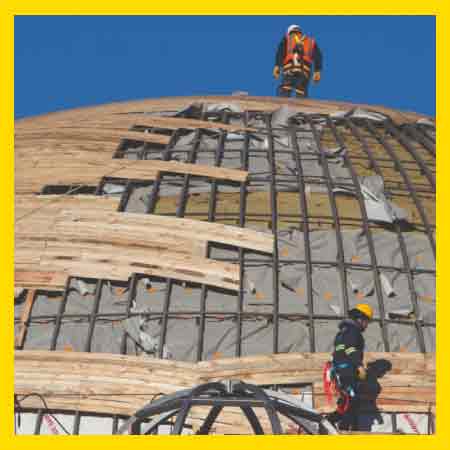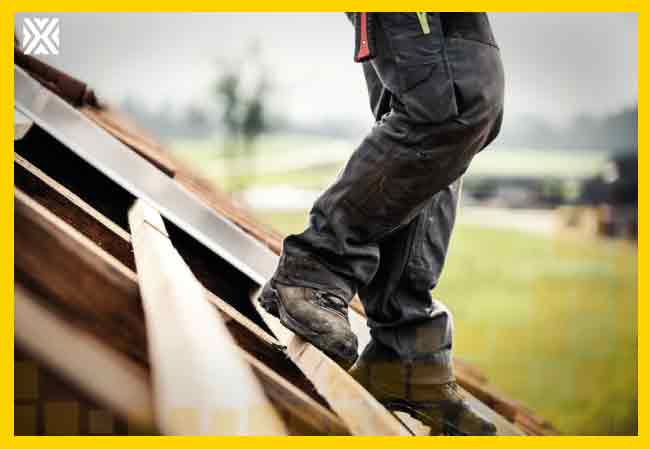Currency
June 08, 2019


When we think about foot protection we generally think about protection from a traumatic injury – something falling on our foot and breaking bones, severing toes, or cutting our feet – but foot protection can offer a much wider defence against a wide array of injuries.
Years ago I worked in a factory assembling seats for automobiles. Despite the company actually paying for safety boots and shoes, only a fraction of us took advantage of the offer. I did because I am a cheap, cheap man and the boots were expensive. When I got my new boots many of my peers advised me against wearing them, with specious reasoning and unfounded worry. Some told me that the steel toe of the boot would actually do more harm than good. Another helpful co-worker pointed out that if my foot was run over by a forklift truck my toes would be cut off. Numerous other co-workers gave me similarly bad advice, failing to see their own extraordinarily flawed logic. After all, losing toes would I imagine be the least of your worries after having a wrestle with a forklift truck.
As it goes, I found the steel-toed boots not only provided protection, but – having dropped a part (and a sharp one at that!) while installing – it saved me the pain of 7kg smashing directly into my foot. That incident could not only have easily injured my foot or toes; it was also a far more likely occurrence than a forklift truck careening through my work area and running over my foot – as had been the sole concern of my somewhat misinformed colleagues.
Additionally, I chose boots that extended to well above my ankle (think combat boot style) which provided me protection against twisting my ankle when I stepped in the many holes in the wood block floor of the ancient factory in which I worked. It wasn’t the primary purpose of the boot, but I appreciated the protection all the same. It’s worth noting that the boot didn’t provide complete protection, it still was incredibly painful to wrench my ankle in the hole made by a missing wood block, but it might have meant the difference between a sore ankle and a sprained or broken ankle, so for me at least, they were worth wearing.
Highs and lows
Some people criticise steel toecap shoes as getting hot in the summer and getting (and staying) dangerously cold in the winter. My work now takes me all over the world from frigid oil fields to the blistering hot temperatures of a steel mill, so I chose composite-toed shoes instead of steel-toed. In addition to being poor conductors of heat and cold they are also poor conductors of electricity, so while they aren’t likely to offer much protection if my foot gets struck by lightning or an arc flash, the composite does provide some modicum of protection against electricity. In addition to steel or composite toes, you should select a boot – with boots being preferable to shoes based on the added protection from their sheer height – with a steel or composite insole to protect you from puncture wounds that occur when you step on nails, broken glass, or any other sharp object on which you might tread.
Many people reading this will be thinking, “I don’t work in construction or a factory, why do I need protective footwear? Foot protection isn’t just for preventing foot trauma. If, for example, you routinely work around electricity, you should wear nonconducting shoes, with no metal or nails. Of course, it may not be obvious by looking at the shoe, so you should always enjoin the advice of a shoe professional; if not the manufacturer then a qualified and knowledgeable salesperson who specialises in safety shoes.
While one cannot rely on protective footwear for everything, in most cases where they are required they will provide good protection against injury from the hazards that you will typically face in your work environment. Your employer’s safety department is the best source of the specific footwear to protect your feet in your work environment, but just in case, here are some things to consider.
Another element of in foot protection is protection from dangerous chemicals. Chemicals can burn your feet, and your exposed skin can then act as a portal to your bloodstream. Neoprene or rubber boots can protect against many chemical hazards (again check with your Safety Department and/or the Safety Data Sheet (SDS) to see the appropriate material to protect against a specific chemical; here is a case where one material will not necessarily protect you against all chemicals and some chemicals can chew through certain materials like a hot knife through butter.
Even the most basic leather foot protection can provide protection against most thermal burns, and in cases where the heat source or duration of exposure is extreme one is still better off wearing boots than not wearing them. If you step in molten metal you’re going to injure your foot, so do your best to avoid stepping in molten metal. If you spill scalding water or hot grease on your feet a high-quality leather boot will offer some protection; it may not spare you from injury but it could mean the difference between a first and a third degree burn.
Despite all of the many ways in which you can injure your feet, many of the most frequent foot injuries are caused by poor fitting boots or shoes. So while getting the right type of shoe is important, so is getting shoes that are in good condition.
The most common injuries
According to Industrial Safety and Hygiene News (ISHN), the most common foot injuries are: plantar fasciitis, stress fractures, ankle sprains, bunions, turf toe, Achilles tendinitis, and heel spurs.
Plantar fasciitis
Plantar fasciitis is a painful condition caused by failing to warm up and stretch your feet and lower leg muscles before prolonged standing, walking or performing any repetitive task that puts excessive pressure on your heel. It is characterised by a stabbing pain in your heel at the beginning of the day, which gradually subsides as the day proceeds. If you don’t address this condition it can lead to chronic pain in your calves and hamstrings. If you suffer from plantar fasciitis apply ice to your heal for about 10 minutes a day and remember to stretch your lower legs daily – especially before work.
Stress fractures
Fractures are most commonly synonymous with a broken bone, but this is not the case with stress fractures. Stress fractures are tiny cracks in the bone that cause the area to hurt. Stress fractures are typically not caused by the kind of trauma from which safety shoes or boots will protect your feet. In the workplace this type of injury tends to afflict employees whose work requires them to walk or stand on a hard surface for most of their shift. Stress fractures can also occur when you make a sudden change from low intensity movement to high-intensity movement; just think of hospital workers who walk on hard surfaces only to be summoned into action to address an emergency. Many people who suffer from stress fractures are shocked at how easy it was to become injured in this way. The best way to treat a stress fracture is to stay off the affected foot and rest until the fracture heals itself. Stress fractures rarely require a cast, but a medical boot may be necessary.
For the most part, stress fractures heal on their own with rest. In some cases, wearing a medical boot may be necessary to avoid putting weight on the affected foot.
Ankle sprains Spraining your ankle is caused when the foot and the ankle move in opposite directions, with actions typically described as twisting, rolling, or wrenching. This movement causes damage to the ligaments which, while generally not serious, can cause immense, intense pain; roughly equivalent to having nasal hairs forcefully plucked. Ankle sprains can be caused by everything from walking on an uneven pavement to suddenly changing directions. In general you will want to seek medical attention to ensure you haven’t broken your ankle, but if it is just a “bad sprain” then elevating the ankle, applying ice to reduce the swelling, an ice bandage and of course resting the ankle are the best remedies.









